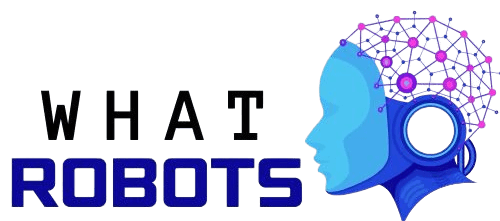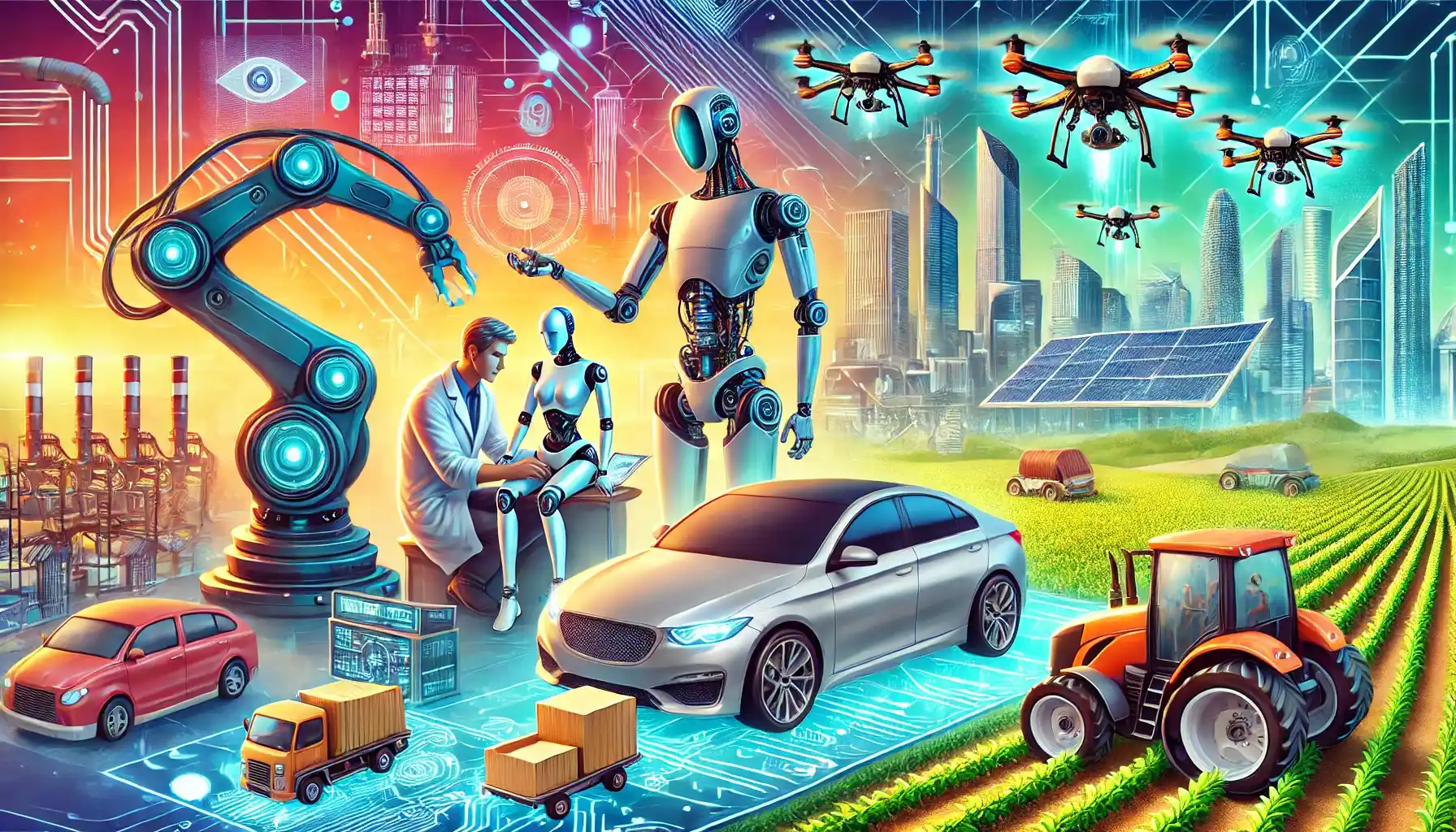The rapid advancement of technology has propelled robots from the realm of science fiction into everyday reality. They assemble our cars, vacuum our floors, and even perform complex surgeries. In essence, robots are mechanical or virtual entities that can carry out tasks autonomously or semi-autonomously, often with the help of artificial intelligence (AI). This article delves into the fascinating world of robots, explores their various types, examines their benefits and challenges, and looks toward the future of robotic innovation.
Table of Contents
The Evolution
Early Beginnings
The concept of machines designed to perform tasks that humans once did has existed for centuries. The ancient Greeks and Chinese both had myths and prototypes of mechanical figures to showcase engineering prowess. However, robotics as we know it today truly began to take shape in the 20th century.
- 1970s and 1980s: As integrated circuits and computing power improved, robots became more flexible and intelligent. The field of robotics research expanded, and interest rose in creating robotic arms, manipulators, and automated guided vehicles (AGVs).
- 1990s and Beyond: Advances in electronics and software engineering paved the way for collaborative robots (cobots) that can safely work alongside humans. Robotics also found its way into consumer products and services, from household appliances to entertainment.
Rise of Modern Robotics
Today, robotics encompasses a wide range of disciplines, including mechanical engineering, electronics, computer science, and artificial intelligence. Modern robots come in various shapes and sizes, from the microscopic to the gigantic. They can be found in almost every industry—manufacturing, healthcare, logistics, and even space exploration.
In recent years, a strong focus has been placed on AI-driven solutions, enabling robots to “learn” from data and experiences. This machine-learning approach helps robots refine their decision-making and adapt to unforeseen challenges.
Types
Industrial
Industrial robots are the cornerstone of manufacturing. They typically feature robotic arms with multiple joints, allowing for flexible movement and precise positioning. Equipped with sensors and programming interfaces, these robots excel at tasks like welding, painting, and assembly. Some key characteristics of industrial robots include:
- High Precision: Capable of placing components within micrometer accuracy.
- Repetitive Tasks: Ideal for repetitive and strenuous tasks that human workers find fatiguing.
- Scalability: Easily integrated into large production lines and can operate 24/7 with minimal downtime.
Service
It designed for tasks that interact directly with humans or their environments, outside of an industrial setup. Examples include:
- Delivery : Used by restaurants, hotels, and hospitals to transport items quickly.
- Cleaning : Autonomous vacuum cleaners and floor scrubbers that navigate indoor spaces.
- Healthcare : Robotic surgery systems, rehabilitation aids, and telepresence robots that help healthcare professionals provide patient care.
It often emphasize user-friendliness and safety to ensure they can coexist seamlessly with people in shared spaces.
Humanoid
Humanoid robots are designed to resemble the human form. They usually have a head, torso, arms, and legs, allowing them to navigate environments built for humans. Their primary purpose is often research, entertainment, or performing tasks that are inherently human-centric. While still in their early stages, humanoid robots show great promise in areas such as elderly care, hospitality, and retail, where customer interaction is key.
AI and Machine Learning
Vision Systems
One of the most significant breakthroughs in robotics involves computer vision. By integrating cameras, sensors, and deep learning algorithms, robots can process visual data to identify objects, interpret gestures, and navigate complex environments. For instance, self-driving cars rely on an array of sensors and machine learning models to detect obstacles, read signs, and make critical decisions in real-time.
Natural Language Processing
Natural Language Processing (NLP) enables robots to understand and respond to human language. Voice assistants and chatbots—like the ones found in smartphones and smart speakers—are prime examples. As NLP becomes more sophisticated, robots can engage in more natural and intuitive interactions, providing information, customer service, or companionship.
Benefits
Increased Productivity and Efficiency
From manufacturing lines to service industries, robots excel at performing repetitive or detail-oriented tasks without sacrificing speed or accuracy. This capability greatly boosts productivity and efficiency, reducing the time and cost required to accomplish various processes. In industries where margins are slim and competition is fierce, such improvements can translate to significant profits and competitive advantages.
Enhanced Safety
Robots alleviate the need for humans to perform dangerous or physically demanding tasks, such as working with hazardous chemicals, lifting heavy loads, or operating in extreme environments (e.g., nuclear facilities, deep-sea explorations). By delegating such tasks to robots, organizations can minimize workplace accidents and injuries, fostering a safer work environment.
Consistent Quality
One of the biggest advantages of robots is their unwavering consistency. Unlike humans, robots do not experience fatigue or lapses in concentration. This consistency is critical in industries like pharmaceutical manufacturing, where even minute deviations can compromise product quality. By maintaining high standards, companies can reduce waste and avoid costly recalls.
Challenges and Considerations
Job Displacement and Workforce Transition
A common concern surrounding the rise of automation is the potential displacement of human workers. While robots can take over mundane or high-risk tasks, they can also replace certain types of jobs. Consequently, there is a growing need for workforce reskilling. By focusing on retraining programs and continuous learning, society can mitigate the negative impact of job displacement. Additionally, robots create new job opportunities in programming, maintenance, and supervision, offsetting some of the losses.
Ethical and Legal Issues
As robotic systems grow more autonomous, ethical and legal questions arise. For example:
- Accountability: Who is responsible if a self-driving car makes a fatal error—the manufacturer, the programmer, or the passenger?
- Privacy: With increased data collection, how can we ensure sensitive information remains secure?
- Fairness: Could robots introduce or reinforce biases, such as AI algorithms that favor certain demographics?
Governments, researchers, and industry leaders are working to establish guidelines and frameworks that address these ethical dilemmas.
Security Concerns
Robots reliant on network connectivity and AI software are susceptible to cyberattacks. A malicious actor could seize control of a robot, disrupt business operations, or even cause harm to individuals. As such, cybersecurity remains a top priority in the robotics sector. Manufacturers and end-users alike must invest in robust security measures, including encryption protocols and regular software updates, to mitigate risks.
The Future
Collaborative (Cobots)
Robots working side by side with human operators, or cobots, are on the rise. Cobots are often safer, lighter, and more user-friendly than traditional industrial robots, making them ideal for smaller businesses and start-ups. They excel in applications where human dexterity and robot precision are both valuable, such as in assembly lines that handle delicate products.
Wearable Robotics
Wearable robots, such as exoskeletons, have shown great promise in both healthcare and industrial settings. In medical rehabilitation, exoskeletons help individuals who have suffered spinal cord injuries or strokes to walk again, significantly improving the quality of life. In industrial settings, they reduce fatigue and the risk of back injuries by offering workers enhanced lifting capabilities and better posture support.
Swarm Robotics
Inspired by the collective behavior of social insects like bees and ants, swarm robotics aims to deploy large groups of simple robots that can work together to complete complex tasks. From search-and-rescue missions to precision agriculture, swarms can cover wide areas and perform tasks more efficiently than any single large robot.
Bio-inspired Robotics
Researches are increasingly looking to nature for inspiration, developing robots that mimic the movements and adaptability of animals. Examples include robotic snakes for search-and-rescue in tight spaces, and bird-like drones that can glide and perch with remarkable agility. By adapting nature’s designs, engineers can create robots that excel in challenging and unpredictable environments.
Embracing Robotic Innovation Responsibly
Robots are transforming our world at an unprecedented pace—streamlining processes, enhancing productivity, and redefining how we live and work. However, to fully harness their potential, we must address the ethical, legal, and social challenges that arise. Collaboration between governments, private sector leaders, and academic researchers is crucial in ensuring that these technologies are used responsibly and equitably.
If you want to learn more about the latest robotics trends, standards, and educational resources, visit the Robotics Industries Association, a trusted platform that provides in-depth insights into the ever-evolving field.
Conclusion
Robots have transitioned from futuristic speculation to indispensable tools across multiple sectors. Their presence, powered by AI and machine learning, will only deepen in our daily lives and in industries worldwide. Although concerns about job displacement and ethical implications are valid, the overall impact of robotics can be positive if we embrace innovation responsibly and equip the workforce with the necessary skills.
As it continues to evolve, we can expect a future where humans and robots work synergistically—tackling tasks from the mundane to the extraordinary. In this brave new world, the key lies in using the technology to empower humanity rather than replace it. By doing so, we can look forward to a future enriched by the invaluable contributions of robots, ensuring that the promise of automation benefits us all.

